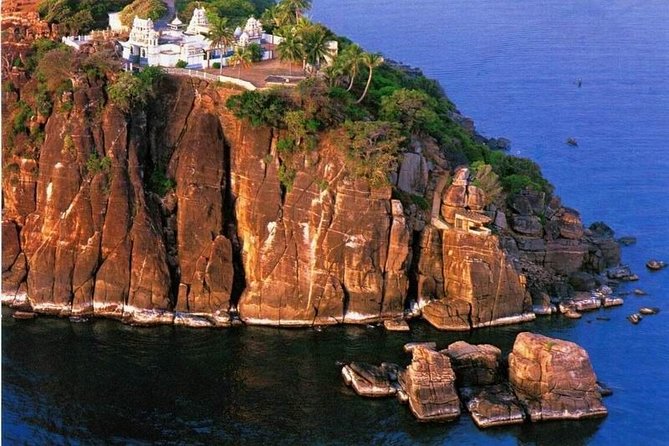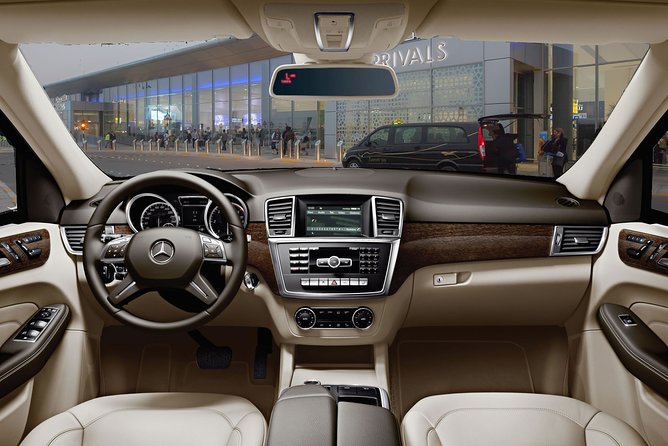Colombo Trip Overview
The UNESCO World Heritage Sites of Anuradhapura and Polonnaruwa holds the candle to the Buddhist marvels of India. It is bespoke with peeling stupas, monasteries, residential quarters and universities. The semi-circled stupas or relics, served as a solace for forethought and meditation in ancient Buddhist culture. These two world heritages sites must be in your To-Do list when you visit to Sri Lanka. Your trip to Sri Lanka won’t be complete without you visiting these site also these sites holds the Secrets and the true heritage of Sri Lanka
• Enjoy personalized attention on a private tour
• Hassle-free hotel pickup and drop-offs
• Travel comfortably in an air-conditioned vehicle with a travel guide driver
• Once-in-a-lifetime opportunity & perfect to explore Sri Lankan Culture
Additional Info
Duration: 2 days
Starts: Colombo, Sri Lanka
Trip Category: Cultural & Theme Tours >> Cultural Tours
Explore Colombo Promoted Experiences
What to Expect When Visiting Colombo, Western Province, Sri Lanka
The UNESCO World Heritage Sites of Anuradhapura and Polonnaruwa holds the candle to the Buddhist marvels of India. It is bespoke with peeling stupas, monasteries, residential quarters and universities. The semi-circled stupas or relics, served as a solace for forethought and meditation in ancient Buddhist culture. These two world heritages sites must be in your To-Do list when you visit to Sri Lanka. Your trip to Sri Lanka won’t be complete without you visiting these site also these sites holds the Secrets and the true heritage of Sri Lanka
• Enjoy personalized attention on a private tour
• Hassle-free hotel pickup and drop-offs
• Travel comfortably in an air-conditioned vehicle with a travel guide driver
• Once-in-a-lifetime opportunity & perfect to explore Sri Lankan Culture
Itinerary
Day 1: Negombo/Colombo – Anuradhapura
Stop At: Ruwanweli Maha Seya, Abhayawewa Road, Anuradhapura, Sri Lanka
The Ruwanwelisaya is a stupa in Sri Lanka, considered a marvel for its architectural qualities and sacred to many Buddhists all over the world. It was built by King Dutugemunu c. 140 B.C., who became lord of all Sri Lanka after a war in which the Chola King Elara, was defeated. It is also known as Mahathupa, Swarnamali Chaitya, Suvarnamali Mahaceti (in Pali) and Rathnamali Dagaba.This is one of the Solosmasthana (the 16 places of veneration) and the Atamasthana (the 8 places of veneration in the ancient sacred city of Anuradhapura). The stupa is one of the world’s tallest monuments, standing at 103 m (338 ft) and with a circumference of 290 m (951 ft). The Kaunghmudaw Pagoda in Sagaing, Myanmar is modeled after this stupa
Duration: 1 hour
Stop At: Jethawanaramaya – ජේතවනාරාමය, B341 Watawandana Rd, Anuradhapura, Sri Lanka
The Jetavanaramaya is a Buddhist Stupa located in the ruins of Jetavana in the ancient city Anuradhapura. The old stupas draw white-clad pilgrims and orange-robed monks who pray and place flowers, oils, and talismans around the surrounding shrines, and Buddha statues. The structure is significant in the island’s history for it represents the tensions within the Theravada and Mahayana sects of Buddhism; it is also significant in recorded history as one of the tallest structures in the ancient world; the height of the stupa is 400 feet (122 m), making it the tallest stupa in the ancient world. The structure is no longer the tallest, but it is still the largest, with a base-area of 233,000 m2 (2,508,000 sq ft). Approximately 93.3 million baked bricks were used in its construction; the engineering ingenuity behind the construction of the structure is a significant development in the history of the island.
Duration: 1 hour
Stop At: Rathna Prasadaya, Abhayagiri Complex Anuradhapura, Anuradhapura, Sri Lanka
Gem Palace is the Uposatha garaya (Chapter House) of Abhayagiri viharaya built by king Kavantissa, also known as King Kanitta thissa, during the 192-194 AD. To compete with Lovamahapaya (Brazon Palce).Even though the present Rathnaprasadaya is in ruins the monolithic pillars, guard stones and remaining structure of the building support the theory of the archaeologists have discovered that the building was originally 7 stories high with tiered roof and front of the building was completed with beautiful guard stones (Mura Gal) and statue of Buddha made of gold.The carvings exhibit the architectural marvel present at the time, with a mythical dragon, 7 headed cobra and dwarf servants. These guard stones considered the most preserved and most intricate guard stones found from Anuradhapura era, stands proudly to this day.
Duration: 1 hour
Stop At: Lovamahapaya Brazen Palace, End of Trincomalee Rd, Anuradhapura 50000 Sri Lanka
Lovamahapaya was an ancient building located between Ruvanveliseya and Sri Mahabodiya in the ancient city of Anuradhapura. It was built by King DevanampiyaThissa, the first Buddhist king of the country, in the 3rd century BCE and was later redesigned by King Dutthagamani, in the 2nd century BCE, into a massive refractory the remains of which you can see today.According to early historical sources, Lovamahapaya was a massive nine storied building with each side 400 feet long. The building was supported by 40 rows of stone pillars each containing 40 pillars, totaling 1600 pillars in all. Its walls were decorated with corals and precious stones and its roof was covered with copper-bronze plates, because of which it’s also know as the Brazen Palace or Lohaprasadaya. Each level of the building was rumored to have 1,000 rooms. These early descriptions may be exaggerated, but Lovamahapaya would have been one of the most prominent buildings at the time it was constructed.
Duration: 1 hour
Stop At: Dagoba of Thuparama, Anuradhapura Sri Lanka
Thuparameya is a budhdits temple located in the ancient mahamewna park, it was the first stupa to be built after introducing budhism to Sri Lanka by king Devanapiyathissa.Today ruins of this complex covers nearly 3 ½ acres. The stupa was built on the instructions of Mahinda Thero who brought Buddhism to the island to enshrine the right collar-bone of Lord Buddha.On this stupa you can see a unique architectural feature called vatadage, a stupa-house. This building completely housed the stupa. At present four concentric circles of stone pillars are found around the stupa. They diminish in height from inner most circle and at one time carried the weight of a dome-shaped roof over the stupa. There has been 176 pillars which supported this stupa house and in 1896, 31 complete pillars with capitals has been standing. This vatadage has been built in the 1st century AC.
Duration: 1 hour
Meals included:
• Dinner
• Lunch
Accommodation included: Overnight Stay at 3 Star Hotel in Anuradhapura
Day 2: Anuradhapura – Polonnaruwa – Negombo/Colombo
Stop At: Vejayanta Pasada,King parakramabahu, W2V2+282, Polonnaruwa, Sri Lanka
The Royal Palace constructed by Parakramabahu I was a magnificent structure measuring 31m by 13m, and is said to have had seven stories. Today its crumbling remains look like giant cavity-ravaged molars. The 3m-thick walls have holes to receive the floor beams for two higher floors; however, if there were another four levels, these must have been made of wood. The roof in this main hall, which had 50 rooms in all, was supported by 30 columns.
Duration: 1 hour
Stop At: Polonnaruwa Vatadage, Sacred City, Polonnaruwa Sri Lanka
The watadage stupa house was built prior to King Nissanga Malla but he has carried out major renovations on this building. So what you see today is probably his work. The uniqueness of such buildings is that the Stupa is protected by a roof. Therefore Stupa’s in such buildings are small. Another beautiful “Vatadage” is situated in Madirigiriya few kilometers away from Polonnaruwa. The Polonnaruwa Vatadage has two stone platforms decorated with elaborate stone carvings. The lower one is entered through a single entrance facing the north while the second one is accessed through four doorways facing the four cardinal points. This platform houses the stupa which is surrounded by the brick wall. On the center is a small stupa and there are 4 Buddha Statues facing the 4 directions.
Duration: 1 hour
Stop At: Kiri Vehera, Polonnaruwa Sri Lanka
This stupa popularly known as Kiri Vehera is located in Polonnaruwa District of North Central Province, Sri Lanka. The stupa is also a part of the archaeological site called Alahana Pirivena. The origin of this stupa not exactly traced yet. However, it is speculated that this was done by Queen Subhadra, a consort of King Parakramabahu the Great (1153-1186). This is the second largest stupa in Polonnaruwa. The lime plaster of the dome is better preserved compared to the most of other stupa found in Polonnaruwa. Probably the present name “Kiri Vehera” also derived due to this preserved lime plaster.
Duration: 1 hour
Stop At: Lankathilaka Image House, Polonnaruwa Sri Lanka
Polonnaruwa Lankathilaka Image House is a monolithic Buddha image house built by king Parakramabahu (1153-1186) lying on the South of Kiri Vehera. The building is complete made out of bricks and the outer walls are covered with elaborate designs and carvings. The Buddha statue is also completely made out of clay bricks and it has been 41 feet in height. Specially made flat bricks have been used to build this statue and today the portion above the shoulder is destroyed.At the entrance to the Lankathilaka building is two massive pillars made from bricks. The tallest one is 58 feet in height. It is thought that these pillars would have been at least twice as tall this before destruction. According to chronicles this building has had five stories. This too is a part of the Ãlahana Privena.
Duration: 1 hour
Stop At: Gal Vihara, 440/225 Palm Grove State Minuwangoda road, Polonnaruwa 51000 Sri Lanka
Gal Vihara (Sinhala: stone temple), Buddhist Temple at (UNESCO World Heritage Site) at Polonnaruwa, Sri Lanka is the most perfect specimen of Buddha statue hewn out of solid stone. Crafted during the reign of King Parakrabahu (1153-1186 A.C), Gal Vihara statues are still in complete preservation with their irresistible charm and sublimity. It is undeniable that the sculptors of Gal Vihara were of greater skill and expertise in the art of stone sculpture in Sri Lanka. The images at Gal Vihara have brought about higher level of awakening in the observers with respect of Buddhist art in Sri Lanka.Gal Vihara at Polonnaruwa in Sri Lanka known as “The Northern Temple” in the beginning of its history, is a cave complex, about 27 meters in length and 10 meters in height at the centre and sloping towards the ends, with sculptures carved on the solid rock in four shrines.
Duration: 1 hour
Stop At: Samudra Parakrama, Polonnaruwa Sri Lanka
King Parakramabahu, the ruler of Polonnaruwa at the time, built this colossal reservoir spreading over 2400 hectares, which filled-up number of minor tanks with network of irrigation system. The tank was originally consist of 5 large reservoirs naming Thopa wewa, Eramudu Wewa, Dumbuthulu Wewa, Kalahagala Wewa and Bhu Wewa in-order to reduce the pressure of the main dam.Located in the dry zone, Polonnaruwa suffered from lack of water and the poor irrigation system with not enough to supply for the agricultural needs. King Parakramabahu took the initiative to collect every drop of monsoon rain water by creating over 53 tanks in order to enrich and amplify the rice production and agricultural industry all together, providing safe water and sanitation services to the community. Hence the name “wew Bendi Rata” (Country of Reservoirs) was used to describe Polonnaruwa.
Duration: 1 hour
Meals included:
• Lunch
• Breakfast
No accommodation included on this day.






